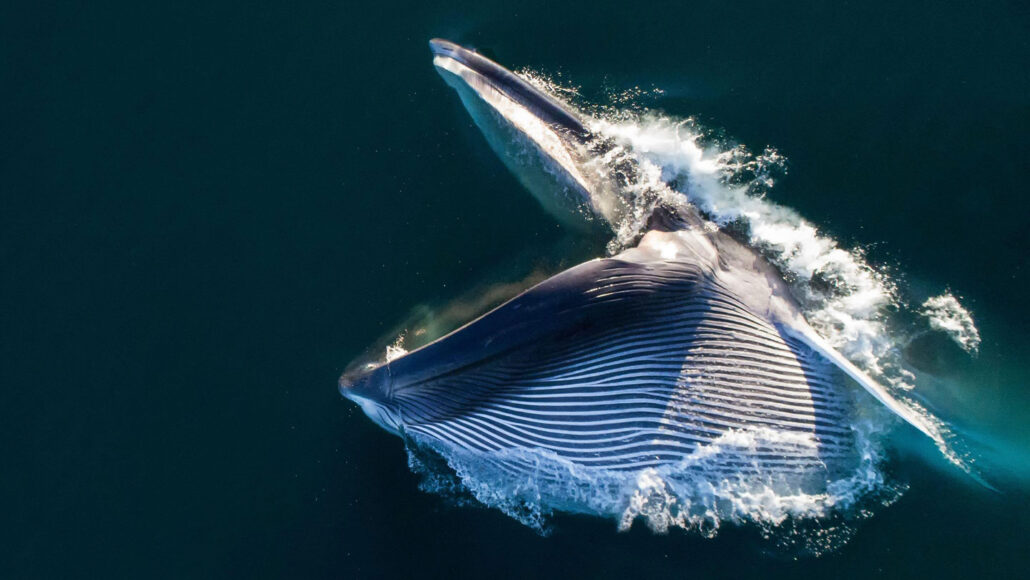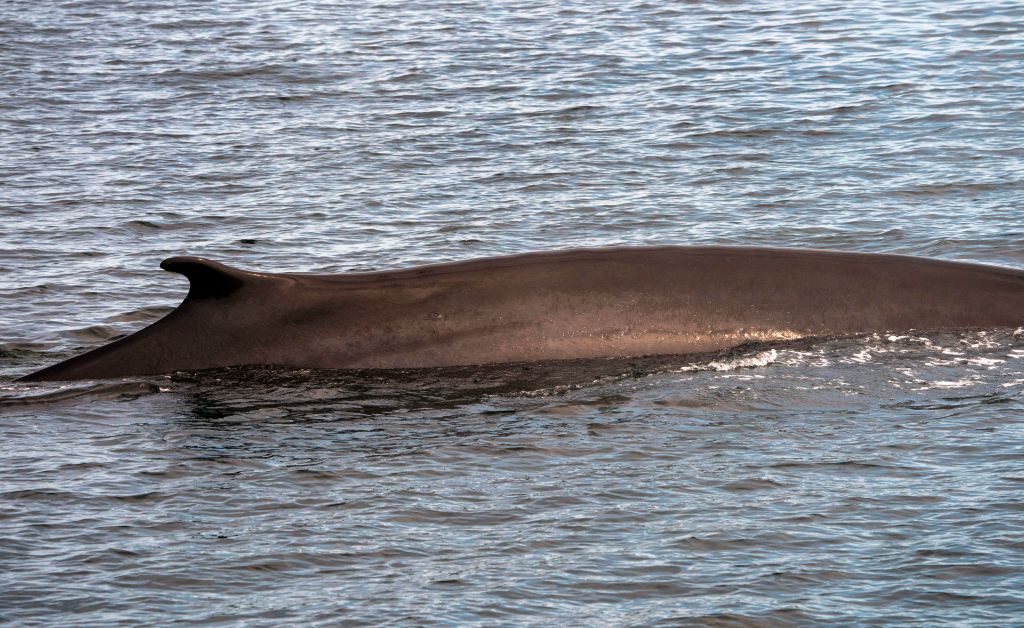
A fin whale lunges, with mouth open and throat pouch distended, as it gulps prey-filled water in the southern Sea of Cortez. Researchers now know how they eat without choking on all that water.
Some of the world’s largest whales feed by lunging through the water with mouths wide open. Scientists have long wondered how the animals withstand the tremendous pressure of water rushing into their throats without choking and drowning.
A plug made of muscle and fat found at the back of fin whales’ mouths might offer a clue. The plug blocks the channel between a fin whale’s mouth and its pharynx, the entrance to the respiratory and digestive tracts. The plug appears to prevent water from rushing into the whale’s lungs and stomach while it lunges and could explain how all lunge-feeding whale eat without choking, researchers report January 20 in Current Biology.
“Think of [the plug] as a trapdoor,” says Kelsey Gil, a marine biologist at the University of British Columbia in Vancouver. “It’s always closed unless muscular activity pulls it out of the way.”

Gil and her team identified the plug after examining the pharynx of 19 fin whales (Balaenoptera physalus) recovered from an Icelandic whaling station. Because fin whales are prodigious eaters and can weigh up to 100 metric tons, the size of a midsized passenger plane, it was easier to work with just the pharynx (SN: 11/3/21).
“Even then we had to use a forklift to move the pharynx to the lab. It can weigh a few hundred pounds,” says Gil.
Once the samples were in the lab, she and her team manipulated different structures in the pharynx to see how they could move and looked at which direction muscle fibers ran within the whales’ throat to understand how the muscles behave when they contract.
When a whale gulps water, the pressure leads to the plug creating a tight seal over the whale’s pharynx. Then, with a mouth full of water and prey, a fin whale pushes the water out through its baleen plates before it swallows. The swallow reflex probably activates the muscle that pulls the plug up to the top of its throat, blocking the upper airways and letting prey slide into its digestive tract. The plug, which appears to be unique among mammals, may explain how other lunge-feeders eat without choking on water, the scientists say.
“The discovery of the ‘oral plug’ answers a long-standing question about how whales can simultaneously protect their respiratory tract while opening their mouths wide to engulf prey-laden water,” says Sarah Fortune, an expert in large whales at Dalhousie University in Halifax, Nova Scotia, who was not involved in the study. It also helps us better understand the adaptations that permitted once terrestrial mammals to evolve back into sea-dwelling creatures, she says.
:focal(2112x2064:2113x2065)/https://tf-cmsv2-smithsonianmag-media.s3.amazonaws.com/filer/e2/c7/e2c76b9a-32ab-4222-8f72-6d9d7676701d/gettyimages-639204166.jpg)
:focal(1390x1341:1391x1342)/https://tf-cmsv2-smithsonianmag-media.s3.amazonaws.com/filer_public/d6/97/d697eacb-b32a-4800-a84d-0f5535f52e86/gettyimages-534977396.jpg)








